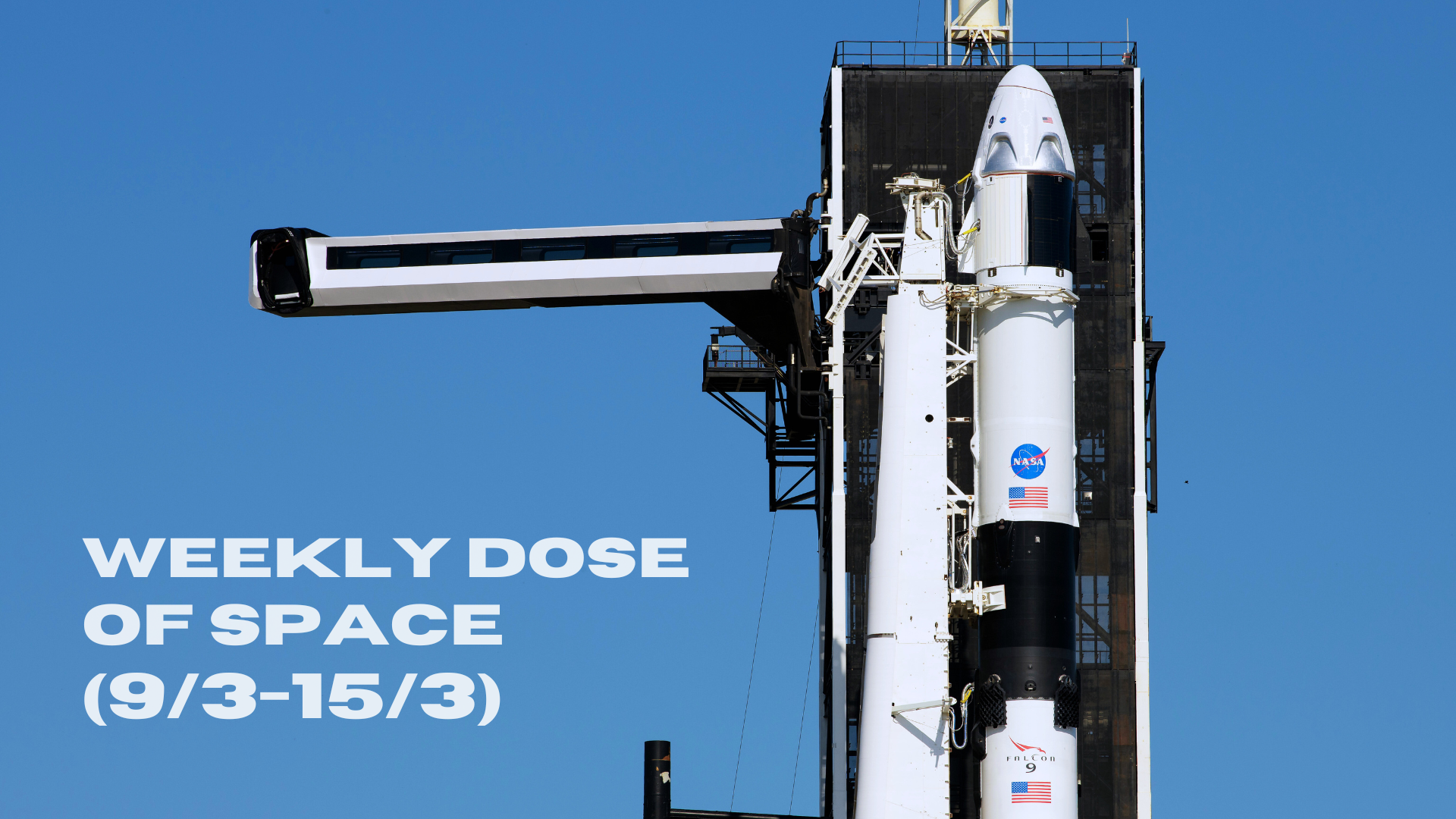Table of Contents
Welcome back to Weekly Dose of Space! This week saw nine launches occurring, with five taking place within fourteen hours. Meanwhile, News during the week had China's Mars sample return mission opening up to international partners and a solar eclipse seen from the Moon! As always, we'll also look ahead to what the worldwide launch schedule might look like next week.
Launches This Week
March 9th - Long March 3B/E with TJSW-15
A Long March 3B/E lifted off from Launch Complex 3 at the Xichang Satellite Launch Center carrying the TJSW-15 satellite to geostationary transfer orbit. The TJSW-15 satellite is stated to be used for testing and verification for multi-band high-speed throughput communications technology as well as communications, radio, television, and data transmission.

March 11th - Long March 8 with Qianfan Polar Group 05
The fifth group of eighteen Qianfan satellites were launched atop of a Long March 8, flying from Commercial Launch Pad 1 at the Wenchang Commercial Space Launch Site. This launch brings the Qianfan internet mega-constellations' total satellite count up to ninety.
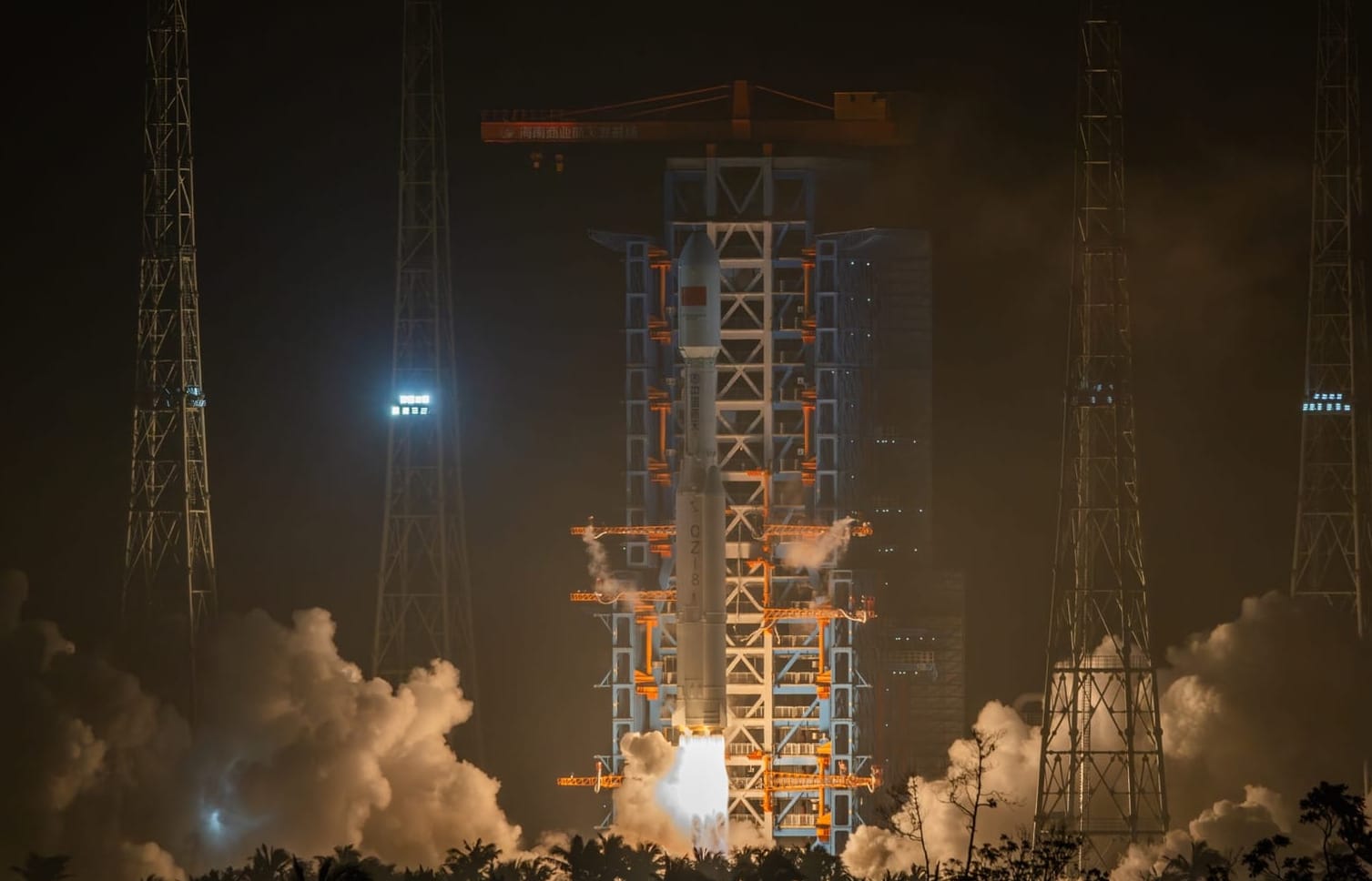
March 12th - Falcon 9 with SPHEREx and PUNCH
SpaceX launched Falcon 9 blasted off from Space Launch Complex 4E, in California, into a polar orbit carrying NASA's SPHEREx (Spectro-Photometer for the History of the Universe, Epoch of Reionization, and Ices Explorer) and PUNCH (Polarimeter to Unify the Corona and Heliosphere) spacecraft. SPHEREx plans to survey the sky in near-infrared light, while PUNCH consists of four satellites that will study the Sun's corona and how it generates solar wind. The booster supporting this launch was B1088, performing its third flight and landing back on Landing Zone 4.
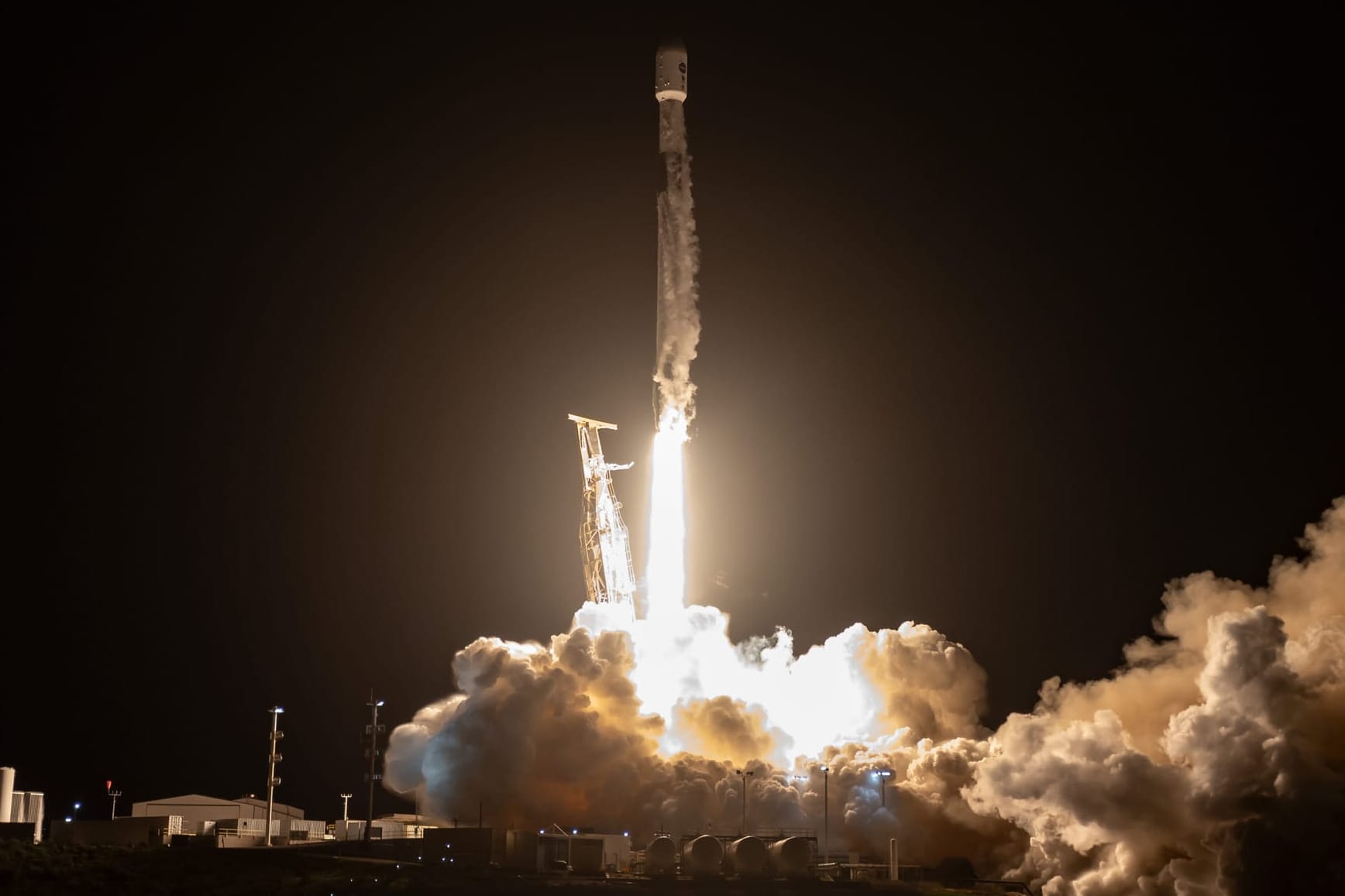
March 13th - Falcon 9 with Starlink Group 12-21
A Falcon 9 carried twenty-one Starlink satellites to low Earth orbit from Space Launch Complex 40, in Florida. Supporting this mission was booster B1069, making its twenty-second flight and landing on the drone ship 'A Shortfall Of Gravitas'.
March 14th - Falcon 9 with Crew-10
NASA's Crew-10 mission lifted off from Launch Complex 39A, in Florida, carrying four astronauts, NASA's Anne McClain and Nichole Ayers, JAXA's Takuya Onishi, and Roscosmos' Kirill Peskov onboard Crew Dragon 'Endurance'. Supporting this launch was Falcon 9 Booster B1090 for its second launch and landing, returning to Landing Zone 1. Details about this mission are available here.
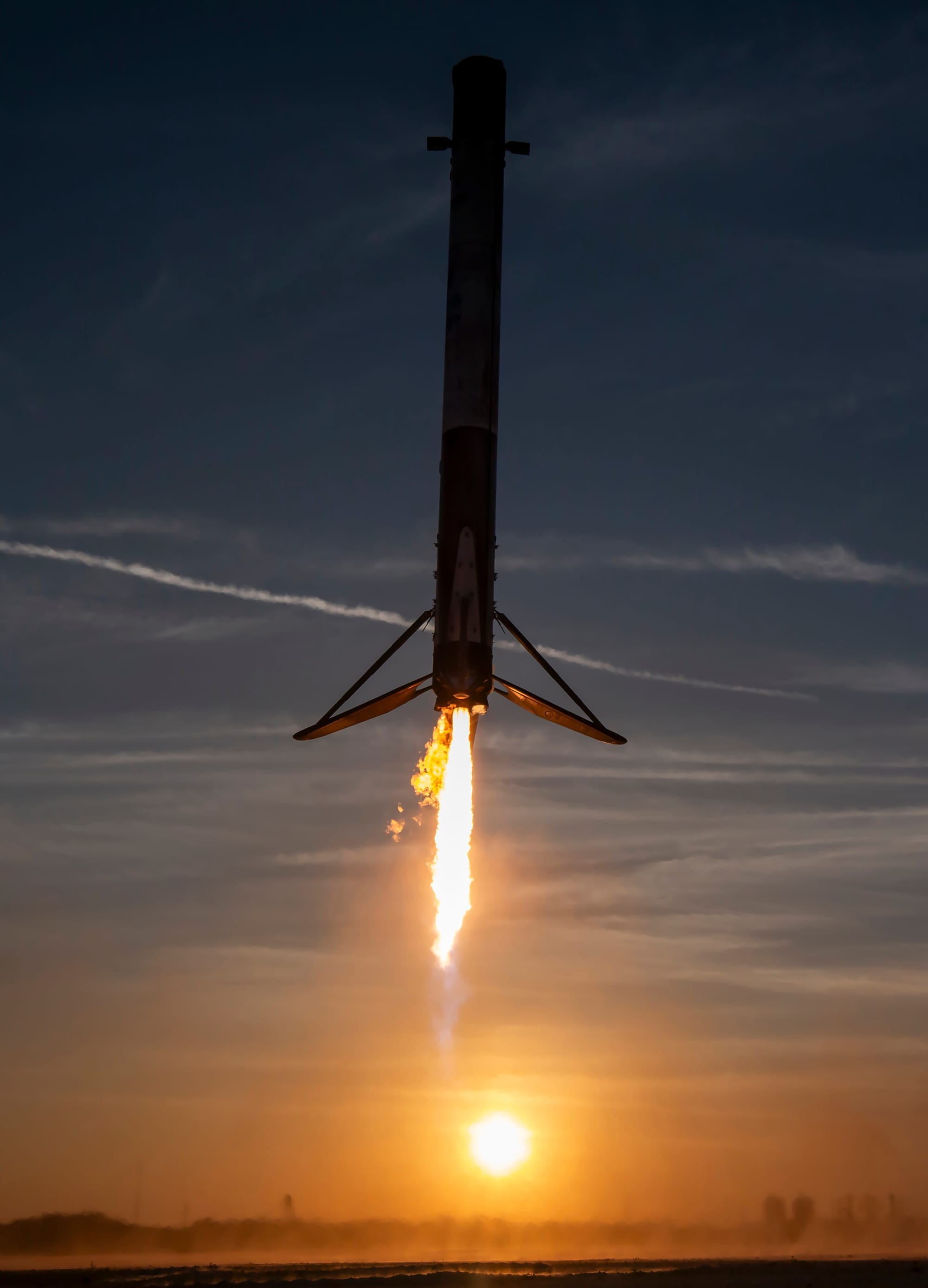
March 15th - Electron for 'The Lightning God Reigns'
Rocket Lab launched its Electron rocket from Launch Complex 1B, located on the Māhia Peninsula in New Zealand, to low Earth orbit. Onboard the rocket was a synthetic aperture radar observation satellite into low Earth orbit for Japanese company iQPS.
A stunning day to go to space. pic.twitter.com/GJiPsmmQ19
— Rocket Lab (@RocketLab) March 15, 2025
Electron lifting off from Launch Complex 1B for 'The Lightning God Reigns', via Rocket Lab on Twitter.
March 15th - Long March 2D with SuperView Neo-3 02 & Tianyan-23
From Launch Area 4 at the Jiuquan Satellite Launch Center, a Long March 2D flew into sun-synchronous orbit carrying SuperView Neo-3 02 and Tianyan-23. SuperView Neo-3 02 is a commercial optical imaging satellite with a resolution of 0.5 meters designed to work with SuperView Neo-3 01 to image key provinces and cities in China regularly, Tianyan-23 is a small Earth observations satellite with a claimed resolution of under a meter.

March 15th - Falcon 9 with Transporter-13
SpaceX launched its thirteenth dedicated Transporter small satellite rideshare mission to sun-synchronous orbit from Space Launch Complex 4E, to deploy over seventy satellites. Booster B1081 supported this mission for its thirteenth flight, with a landing back at Landing Zone 4.
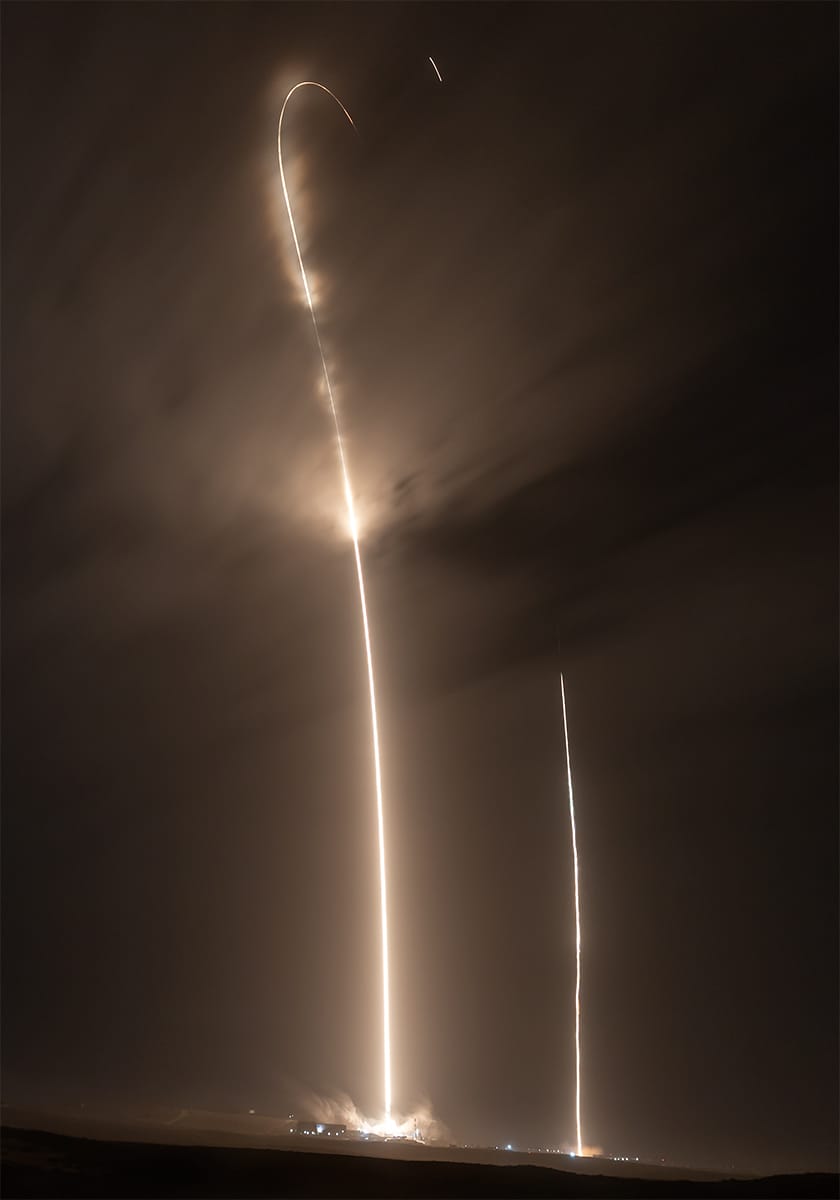
March 15th - Falcon 9 with Starlink Group 12-16
Twenty-three more Starlink satellites were launched atop of a Falcon 9 flying from Space Launch Complex 40. Supporting this Starlink launch was B1078, for its eighteenth launch with a landing downrange on the drone ship 'Just Read The Instructions'.
In Other Space News
Dark times ahead for Blue Ghost…
Blue Ghost turns red! Our lander downlinked more imagery from the Moon captured around 2:30 am CDT during the totality of the solar eclipse last night. These images - rapidly captured by our top deck camera with different exposure settings - were stitched together in a quick… pic.twitter.com/BjKPXXhMLx
— Firefly Aerospace (@Firefly_Space) March 14, 2025
A solar eclipse as seen from the surface of the Moon, via Firefly Aerospace on Twitter.
…In the literal lighting sense, as the lunar night is on the way for Firefly’s Moon lander. While waiting for the lunar night to occur, the Blue Ghost lunar lander witnessed a solar eclipse, with the Earth passing in front of the Sun, on March 14th. During the occasion, the company stated:
"Blue Ghost caught her first look at the solar eclipse from the Moon around 12:30 am CDT. Notice the glowing ring of light emerge in the reflection of our solar panel as Earth began to block the sun." – "During the eclipse, the surface temperatures dropped from 40°C to -170° C."
Since landing near Mons Latreille on the lunar surface on March 2nd, Firefly has been busy conducting various experiments its lander carried onboard. One such experiment sucked up lunar soil, while another drilled beneath the surface and through layers of regolith.
The witnessing of an eclipse also came when NASA officials hailed the mission as a success for the agency's Commercial Lunar Payload Services (CLPS) program, as the lander is carrying various NASA and commercial payloads. So far Firefly's first CLPS mission has been the sole outright success for the program after two Inutitive Machines' landers fell over during landing while another company failed to get to the Moon.
China's Mars sample mission opens up
On March 11th, the China National Space Administration announced that it has opened up its Tianwen-3 Mars sample return mission for international experiments. These experiments will fly alongside the main mission onboard the orbiter-return module or lander-ascent module’s service module.
Any international organization that would like to be onboard Tianwen-3 needs to submit a letter of intent by June. After that, preliminary selections will take place in July and August before submissions of selected proposals are needed by the end of September. In October 2025, the China National Space Administration will make its final selection on international payloads. When international payloads and experiments are confirmed, the China National Space Administration will require them to be delivered in 2027 for preparation ahead of a 2028 launch, and return to Earth around 2030/31.
Payloas selected are limited to some strict power and weight requirements, any experiment must use less than forty watts of power while withstanding lows of negative fifty degrees and highs of seventy degrees Celsius. If an experiment is on the orbiter-return module, it will need to be designed to operate for around three years and weigh under fifteen kilograms, while if an experiment is onboard the lander-ascent module’s service module, it will need to weigh around five kilograms and be designed to survive five years.
What to Expect Next Week
March 16th - Angara 1.2 with Kosmos satellites
An Angara 1.2 is set to liftoff from the Plesetsk Cosmodrome carrying a few Kosmos satellites to low Earth orbit.
March 17th - Ceres-1 with a to-be-confirmed payload
Galactic Energy is preparing to launch its Ceres-1 rocket from Launch Area 95A at the Jiuquan Satellite Launch Center and head to sun-synchronous orbit.
March 18th - Electron for 'High Five'
Rocket Lab is planning to launch Kinéis' fifth, and currently final, batch of five Internet of Things satellites to low Earth orbit from Launch Complex 1A, located on the Māhia Peninsula in New Zealand.
March 18th - Falcon 9 with Starlink Group 12-25
SpaceX is aiming to launch a batch of Starlink satellites to low Earth orbit atop of a Falcon 9 flying from Space Launch Complex 40.
March 20th - Falcon 9 with NROL-57
A batch of Starshield satellites, the military version of Starlink, are expected to launch atop a Falcon 9 from Space Launch Complex 4E.
March 21st - Ceres-1 with a to-be-confirmed payload
Another Ceres-1 is preparing to launch from Launch Area 95A and also flying into sun-synchronous orbit.
March 22nd - Falcon 9 with Starlink Group 11-7
Another batch of Starlink satellites is planned to head to low Earth orbit atop of a Falcon 9 flying from Space Launch Complex 4E.

